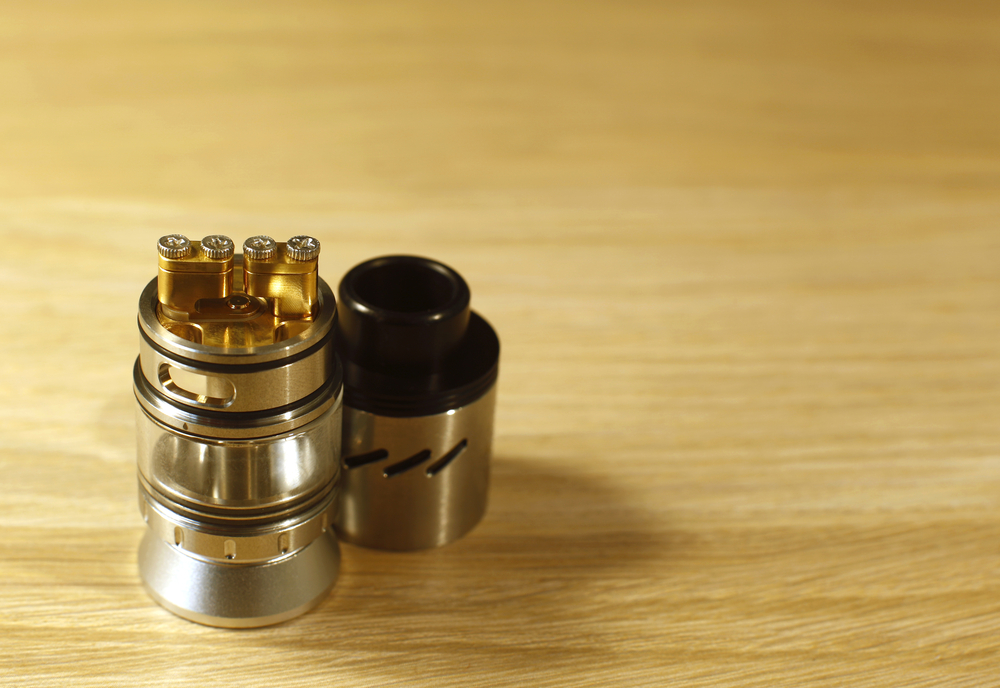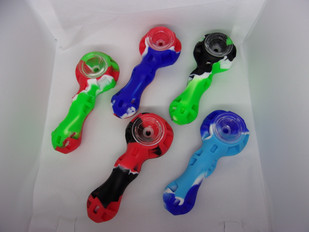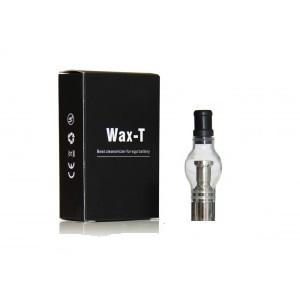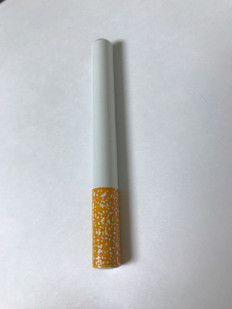- Home
- The Vape Mall Blog
- How to Fix a RDTA in 2024
How to Fix a RDTA in 2024
Posted by on
 A rebuildable dripping tank atomizer
(RDTA) is a popular device among vaping enthusiasts because
it combines the benefits of a rebuildable dripping atomizer (RDA) and a tank
atomizer. RDTAs offer a great blend of flavor and vapor production. Essentially, users can build their own coils,
customize their setup, and enjoy longer vaping essions than with a standard
RDA before needing to refill. However,
like any type of hardware, they can sometimes run into problems. And, that’s why we are going to cover some general
tips for common problems you might experience with your RDTA.
A rebuildable dripping tank atomizer
(RDTA) is a popular device among vaping enthusiasts because
it combines the benefits of a rebuildable dripping atomizer (RDA) and a tank
atomizer. RDTAs offer a great blend of flavor and vapor production. Essentially, users can build their own coils,
customize their setup, and enjoy longer vaping essions than with a standard
RDA before needing to refill. However,
like any type of hardware, they can sometimes run into problems. And, that’s why we are going to cover some general
tips for common problems you might experience with your RDTA.
How Can a Rebuildable Dripping Tank Atomizer Break?
Like all vaping hardware, RDTAs are subject to wear and tear, potential misuse, and manufacturing defects, which can lead to them breaking or malfunctioning. Here are some reasons why an RDTA might break:
1.Material Fatigue: Constant heating and cooling can weaken the metal and plastic components over time, causing them to break or malfunction.
2.Dropping or Physical Damage: Accidentally dropping the RDTA can damage the glass tank, the posts, or other components.
3.Over-tightening: Over-tightening screws or fittings can strip threads or damage seals, leading to leaks or connection problems.
4.Improper Cleaning: Using harsh chemicals or not fully drying the components can lead to corrosion or damage.
5.Incorrect Coil Builds: Building coils that are too large, or using the wrong type of wire, can cause shorts or place undue stress on the device.
6.E-liquid Composition: Certain e-liquids, especially those with high citrus or cinnamon content, can be corrosive to some materials or degrade rubber seals.
7.Wear and Tear: O-rings and seals can wear out over time, leading to leaks or airflow issues.
8.Manufacturing Defects: Sometimes, issues arise from manufacturing defects, which might not be evident immediately after purchase.
9.Connection Issues: The 510 connection (or other connections in some models) can wear out or become damaged, leading to poor conductivity or misalignment.
10.Electrical Issues: If there's a short or another electrical issue, it can damage the device or even be a safety hazard.
11.Clogged Airflow: Over time, accumulated residue from e-liquid can clog the airflow, affecting performance or even causing the device to malfunction.
12.Thermal Expansion: Materials expand and contract with temperature changes. Constant heating and cooling can lead to parts becoming loose or not fitting as they should.
How to Fix an RDTA
Whether you're dealing with leaks, poor flavor, or something else, here's a step-by-step guide to troubleshoot and fix common RDTA issues:
1.Disassemble the RDTA
- Before starting, ensure your hands and the atomizer are clean.
- Take apart all the components, including the build deck, tank section, top cap, and drip tip.
2.Inspect for Visible Damage:
- Check all parts, especially the O-rings, for wear or damage.
- Damaged O-rings can cause leaks. Replace any damaged components.
3.Cleaning:
Clean all parts using warm water and a mild detergent.
A soft brush or old toothbrush can help remove any stubborn e-liquid residue.
Rinse thoroughly and allow all parts to air dry completely.
4.Check the Coil Build:
Ensure the coils are installed evenly and also, are not touching any part of the build deck other than the terminals.
Check for hot spots by firing the coils at a low wattage. They should glow evenly from the inside out.
Adjust and strum the coils as necessary to remove any hot spots.
5.Wicking:
The wicking process is crucial for RDTAs. Improper wicking can lead to leaks or dry hits.
Use organic cotton or your preferred wicking material.
Ensure the cotton is snug but not overly tight within the coil.
Trim the cotton so that it just touches the bottom of the tank. It shouldn't be too long or too short.
Fluff out the ends of the cotton to enhance capillary action.
6.Reassemble and Fill:
Once you have re-wicked, reassemble the RDTA.
Fill the tank with e-liquid, ensuring not to overfill it either.
7.Check the Airflow:
If you're getting spit-back, reduce the amount of e-liquid on the wicks or adjust the airflow to be more open.
For a tighter draw and more intense flavor, close off some of the airflow.
For a looser draw and more cloud production, open up the airflow.
8.Screw Everything Tightly (But Not Too Tight):
- Ensure the build deck, tank section, and top cap are all securely fastened.
- Over-tightening can damage O-rings or threads, but everything should be snug to prevent leaks.
9.Check the 510 Pin:
- The 510 pin on the bottom of your RDTA should be secure.
- If it's loose, it can cause connection problems with your mod.
Note: Before taking a full drag, take a few short puffs to ensure everything is working correctly. Monitor for leaks, flavor quality, and vapor production. Now, if, after all these steps, you're still experiencing problems, it might be a more intricate issue, or the RDTA might be faulty. Consider reaching out to the manufacturer or consulting a local vape shop for more specialized assistance.
There is Hope Yet to Fixing Your RDTA!
Overall, if you're unfamiliar with building and maintaining an RDTA, it's always a good idea to do research, watch tutorials, or seek advice from experienced vapers. Proper knowledge and maintenance can extend the lifespan of the device and ensure a safe vaping experience.
To prevent or mitigate these issues:
- Handle the RDTA with care to avoid drops or impacts.
- Clean the device regularly using appropriate methods.
- Ensure you're using the correct coil builds and materials for your device.
- Periodically check and replace worn out parts, like O-rings and seals.
- Avoid over-tightening parts.
- Store the device in a safe, cool, and dry place when not in use.
 Loading... Please wait...
Loading... Please wait...



















